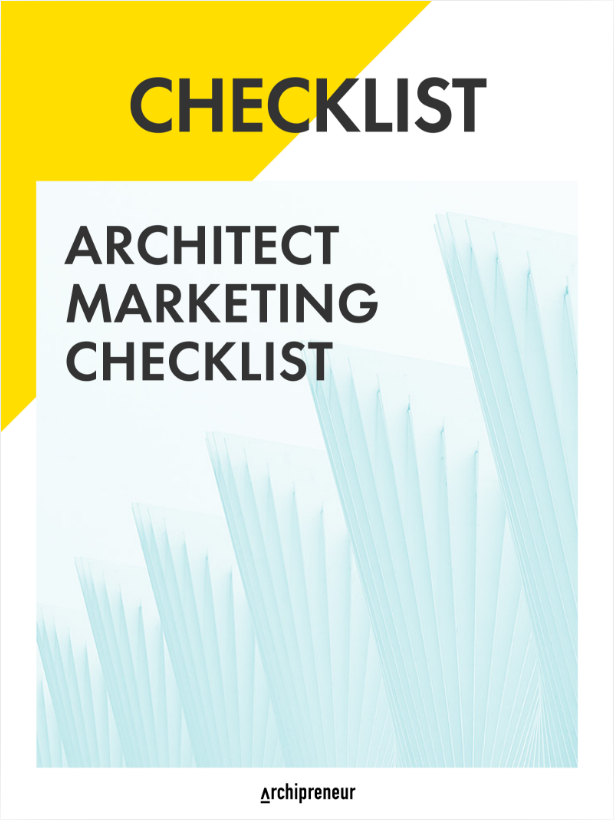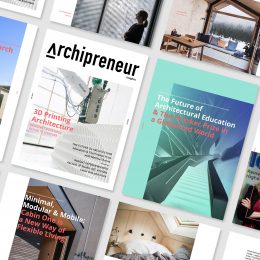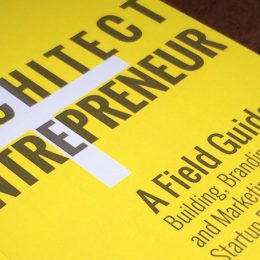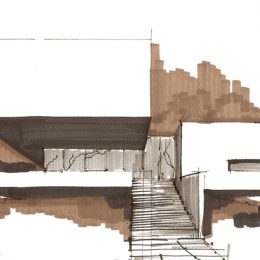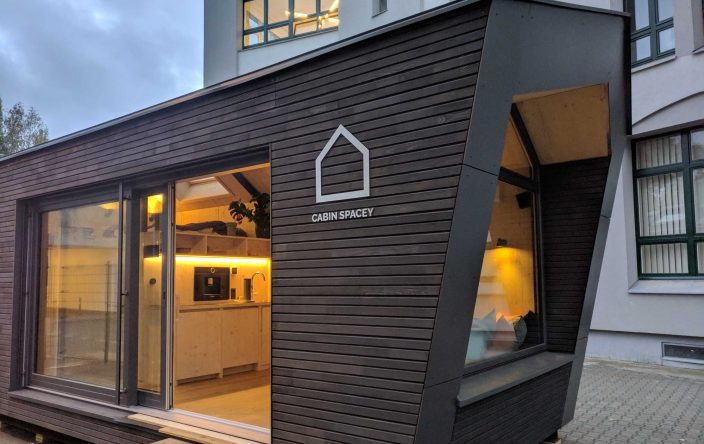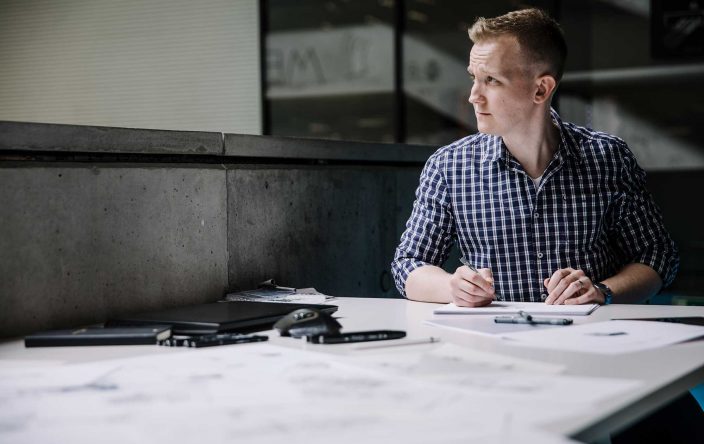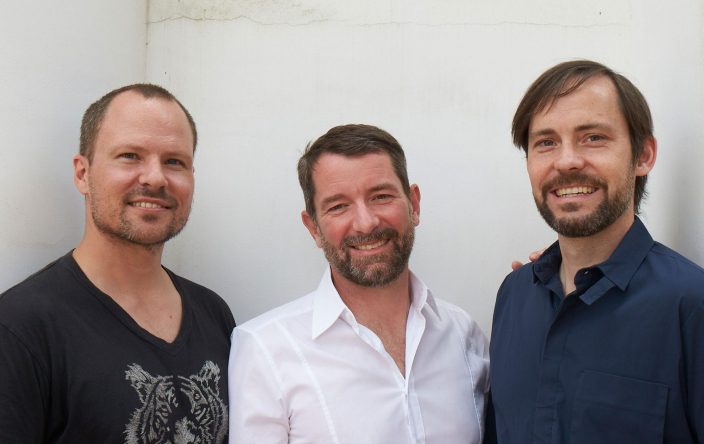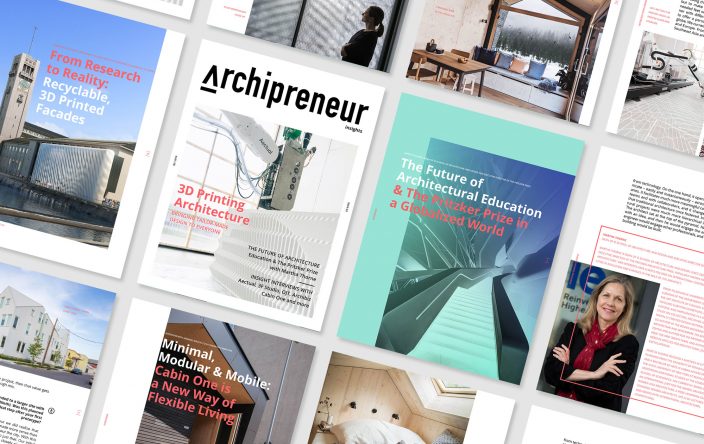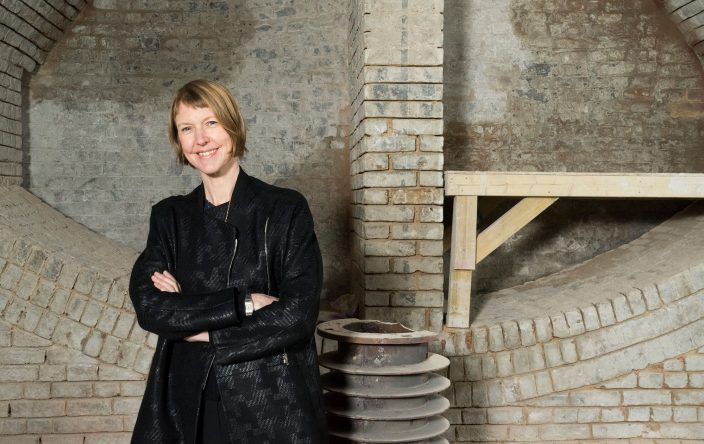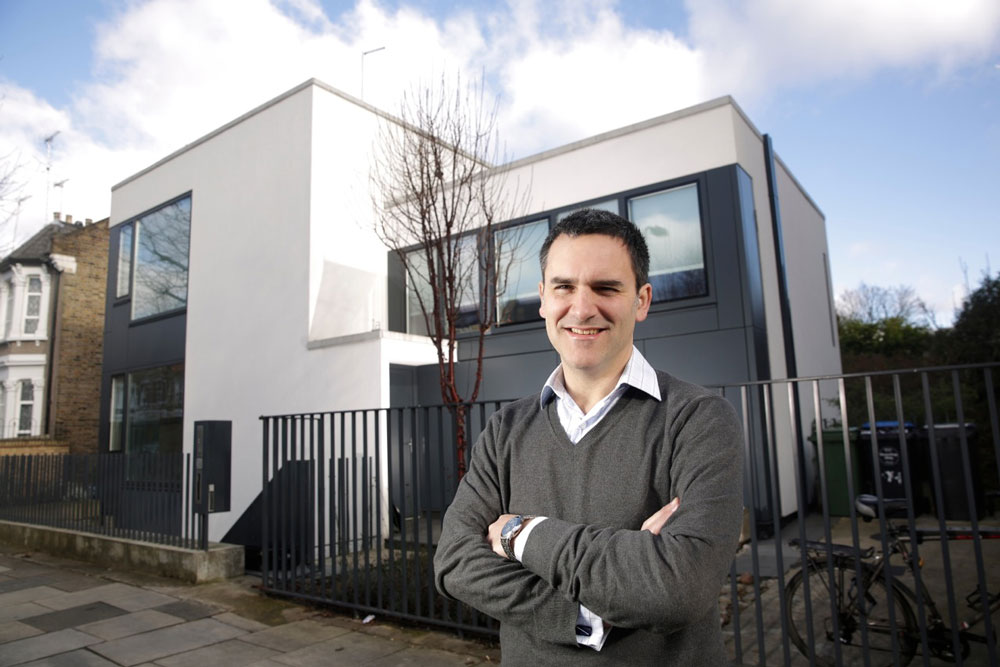
Investment Banking, Gap Site Development and Building New Homes – an Interview with Gus Zogolovitch
Do you want to get into the heads of the top initiators and performers from the architectural community? If so, we heartily welcome you to Archipreneur Insights! In this interview series, we talk to the leaders and key players who have created outstanding work and projects within the fields of architecture, building and development. Get to know how they did it and learn how you could do the same for your own business and projects.
This week’s interview is with London based developer Gus Zogolovitch, founder of several companies in property development and beyond.
Gus started on his entrepreneurial career path after discovering a gap in the market – project management for refurbishment projects – and building a business offering those services. He ran this venture for a couple of years before joining his architect father, Roger Zogolovitch, to set up Solidspace, which aims to deliver design-led boutique, new-build projects on forgotten inner-city gap sites. (Read the interview with Roger Zogolovitch here)
Gus then started his own venture, Inhabit Homes, London’s first custom-build enabler, which helps people to build their own homes and also sells some of the most desirable new-builds in London. During my interview with Gus, I learned that he had founded two additional companies and that they all interact in the process of building homes.
Continue reading to learn from a self-trained independent developer and to discover his take on the role of architecture today.
Enjoy the interview!
Could you tell us a little about your background? How did you start your career?
I was born and brought up in London, but I had travelled a lot both before and after I went to university. I also lived abroad during my studies.
I started my career in the City of London in investment banking, more by accident than by design. Basically, I had been living with a friend of mine who had to get up really early every day. He got really upset that I could sleep in every day so he got me a job in the City, so that I’d have to wake up early too!
I joined CS First Boston as an intern, working for a guy who later went to work at Goldman Sachs and took me with him. So in answer to your question how did I start my career, it was basically luck. At university, I studied mathematics and philosophy, so I had a good general knowledge but no specific knowledge.
And how did you get into property development?
I left Goldman Sachs and traveled around the world for two years. I did various things, even worked in Australia for a bit. When I came back to London I decided to try and get my house refurbished. I had a very bad experience trying to get builders. Since I didn’t have a job I decided to do it myself and take on the role of ‘project manager’.
It was a disaster! I employed some builders who then walked out on the job halfway through and so I then had to find some other builders who would finish what had been started.
But I realized that that was quite an interesting opportunity. I thought that maybe I could help other people who needed management for the refurbishment of their homes. The idea sounded much more appealing than a nine-to-five.
Seeing that gap in the market I set up my first company. My idea was, rather than paying a fixed price for a refurbishment job, why not pay the price of what it’s going to cost for each day of work and then pay a fee for my services in managing builders and making sure they’re doing what they should be doing. If it takes fewer days than scheduled, the client will save money. If it takes as much time as is scheduled, the client will not save money but can be assured the builders have turned up and completed the work.
I tried running that business for a couple of years. In the meantime, my father had been working on a residential development. I came in at the end to help him with some bits and pieces. And then he wanted me to help him with his website and stuff like that. So I did, and from then on I started doing more for his business. My refurbishment business started to decrease in size and so I ended up working full time for my father.
After a couple of years, we decided to become partners. We looked around, found some sites, bought them and developed them. One of these sites ended up being my house!
Did your experience from your work at Goldman Sachs help you to work with property development?
I suppose it gives you a head for numbers. That was very helpful because I think there are a lot of people in property development who can’t quite get their head around the numbers. They’ve probably been lucky because the markets did go up but they don’t always go up. For that reason, understanding the numbers and the finance is quite handy.
What is your role at Solidspace?
Today I’m just a director. I don’t have any active management in Solidspace. I am just there for board meetings.
That explains why you have time to work for your current company, Inhabit Homes. What is your business model for Inhabit Homes?
It has a few business streams. But the core of the business model is to build high quality, design led homes that are more affordable than some of the homes we built when I was working for Solidspace.
We built some lovely homes at Solidspace, but the reality is they are a premium product. That is almost inevitable as my experience is that good design costs more money. Whatever architects tell you, it is hard to avoid that. So what we do is build watertight structural shells that the owner can then fit out themself.
There are a couple of benefits to this:
First, it is cheaper for customers to fit out than it is for us because we have to include all the management costs, interest costs and the developer profit.
Second, they can choose what they want and how they want it. Rather than having us choose the colours and tiles for their kitchen they want, they can do it themselves. They can spend as much or as little time as they want.
Third, the owner has flexibility in the layout. If you sell someone a 1,000-square foot, they can decide for themselves whether they want three small bedrooms or two large bedrooms.
From our perspective, the benefit is that we get out of the project quicker and can move on to the next project. It also means we don’t have to deal with all the snags in a project that take up a lot of management time when doing a fit out.
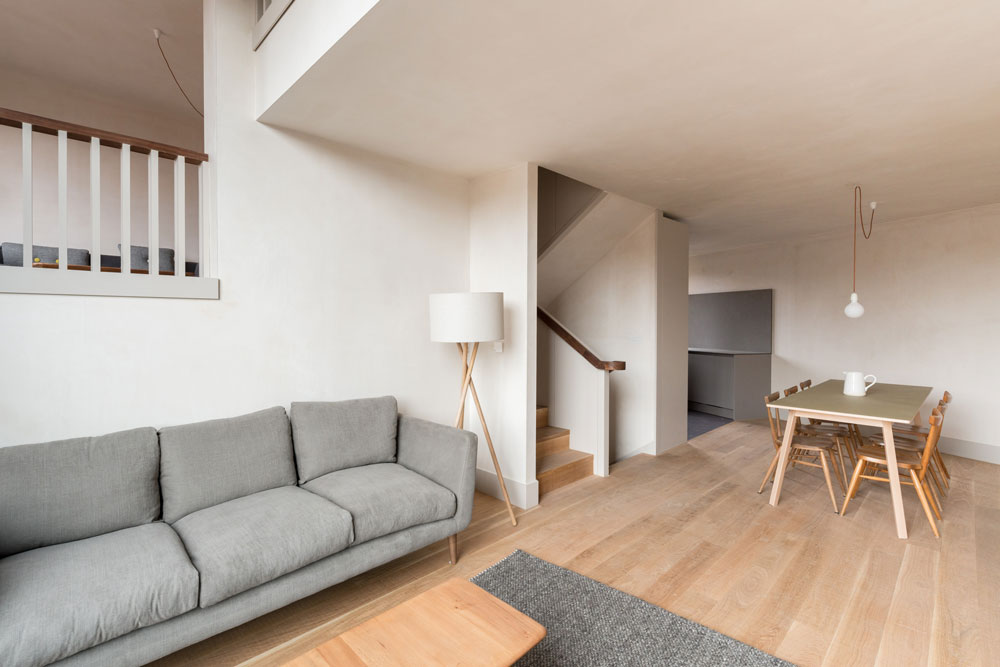
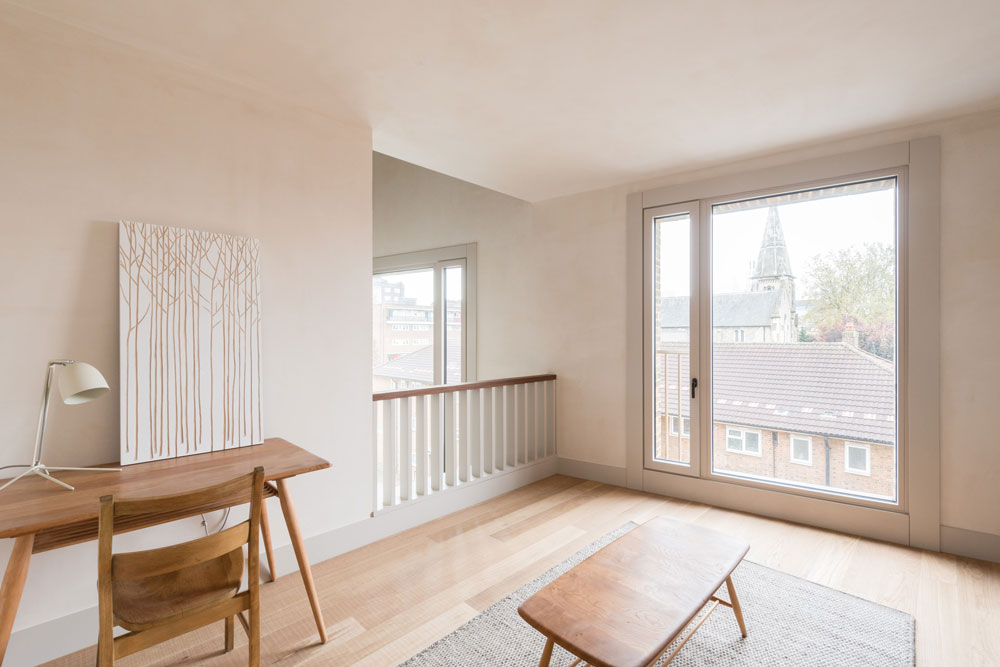
At Inhabit Homes, do you employ architects or is architecture a commodity into which you buy?
We don’t employ architects within our company; we outsource the architecture. We do that at Solidspace as well. We like to bring in architects to do the job well and keep everything fresh and the design good. I also think it gives architects an opportunity to do interesting work. I’m a big believer in partnerships. I think of my partnership with an architect as similar to that of a movie director and movie producer. I am the producer and the architect is the director.
How do you carry out market research, and how do you find locations for your projects?
Land is very difficult to get in London so you can’t be that fussy. It’s generally gut instinct but it’s also massively influenced by the price of the land, our financial resources and where our customer base is. We have quite a lot of information on our customers and where they want to be, and we get a good sense of the kind of customer that likes our product. So obviously we try to build in those places.
At the moment, we tend to look in London but we’re also thinking about places outside London for the near future. For now, we’re busy trying to get our first projects off the ground in London.
Do Solidspace and Inhabit Homes ever interact?
Solidspace and Inhabit do quite a lot of work together. For example, Solidspace is building a very nice development not far away from Inhabit Homes’ office near London Bridge. Inhabit Homes is doing the marketing and sales for Solidspace. We are acting as their sales agency on that project because I think we have a very personal relationship with customers. When it comes to nicely designed products, people say, “I don’t want just a basic estate agent to sell it like they would sell any other products. They’ve got to be someone who knows what they’re talking about, someone who understands design and architecture.”
We’re collaborating with Solidspace but also with other clients. Right now, we are working on a project that was just launched in Holland Park, London, by Peter Salter. We are doing marketing and sales for that too.
Our core activity has been in acting as custom build developers, although I’m very interested to see whether or not we can bring Baugruppen (co-housing projects) to London.
Co-housing doesn’t yet exist in London?
No. The financing isn’t really there. Well, they do exist in some slightly strange forms but there are certainly very few of them and they certainly do not have any commercial perspective.
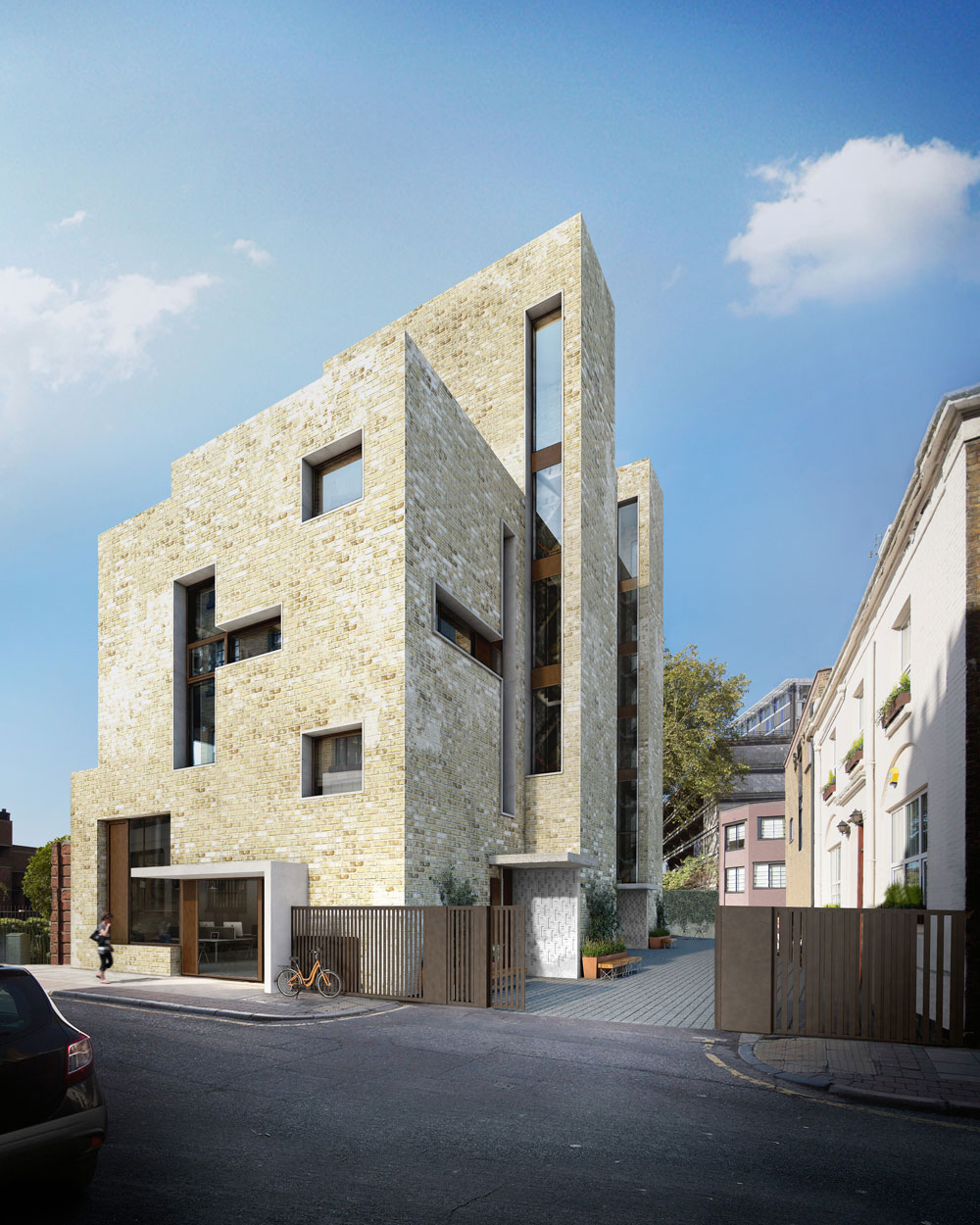
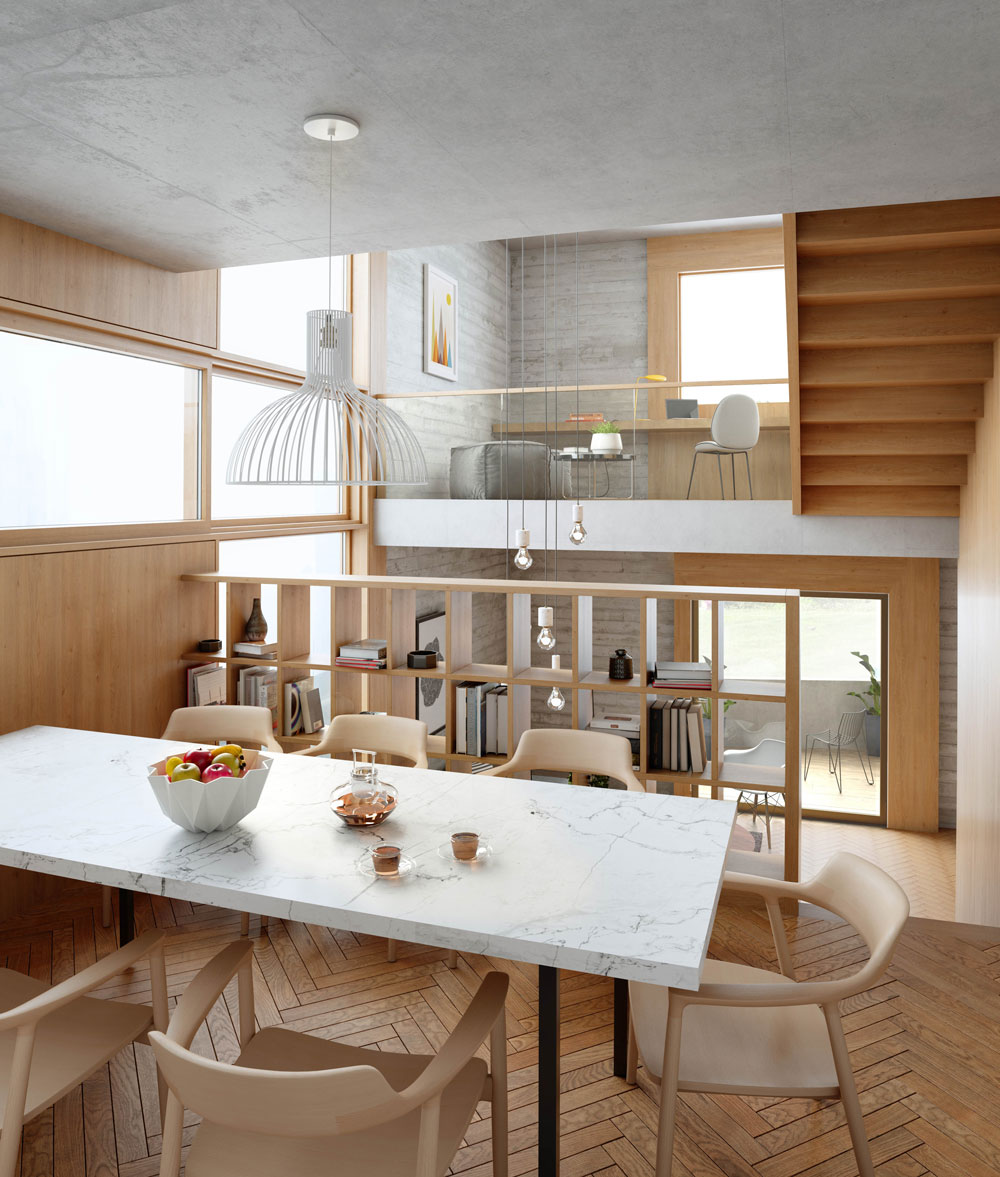
I found yet another company with your name on it: Crowdestates. When did you establish it and what was your goal for this business?
I’m involved with a couple of companies outside traditional property development. Crowdestates is a peer-to-peer lender, a little like crowdfunding for development finance. Small developers need access to finance and what they can borrow at the bank is quite expensive, up to 9% interest a year. The idea behind Crowdestates is to lend money collectively to small property developers at a lower interest rate than the bank.
And is Crowdestates also interacting with Inhabit Homes?
We’re still going through the regulatory authorisation process with Crowdestates. But yes, that is the intention. One of my grander visions is to create a company that does everything from beginning to end.
Another company of mine is called Patch Partners, which sources land opportunities. We train and support people to find development sites, to find old buildings that can be refurbished, or to discover a piece of ground on which to build houses. They go out and find these things themselves and we connect them with developers or investors to get the project up and going.
The vision is to work vertically, Sourcing opportunities through Patch Partners, financing them through Crowdestates, building and selling by Inhabit Homes.
I see! When I was doing my research and found all these companies you own, it made me wonder if you have more days in the week than the average person…
The companies are all connected. A lot of people say, “Don’t work for more than one company.” But I think, why not?
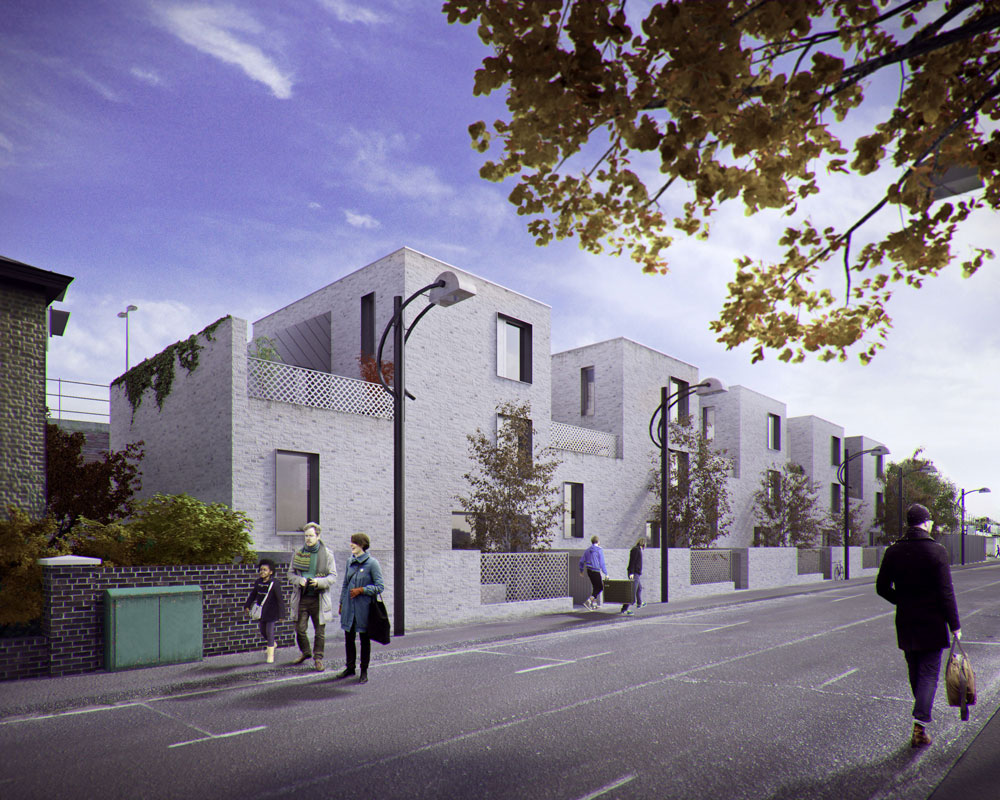
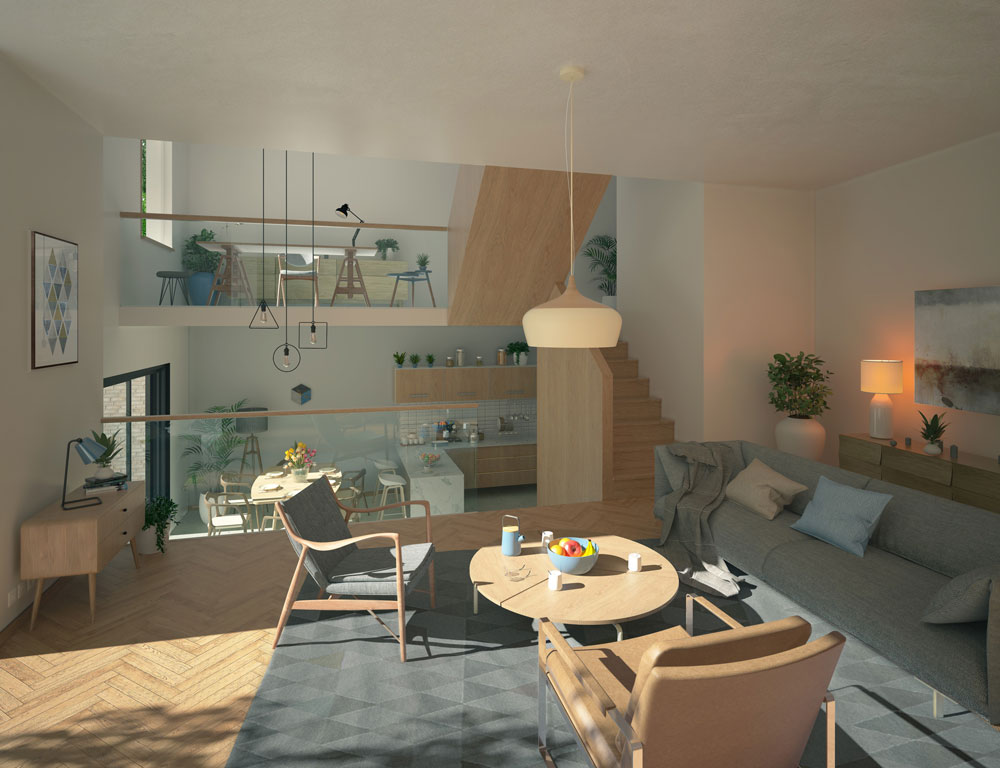
The market is different from how it was when you first started. How would you advise a fresh architecture graduate today on getting his first project off the ground? Any tips on how to manage it?
I think we’re living in amazing times. If you look at the costs of housing and land, they’re ridiculously high. But on the flipside, the costs of connecting and transparency are very low. For that reason, I think there’s never been a better time to create things like Baugruppen (co-housing projects) where communities can come together to buy developments.
I think that we’re going to see more and more of that because why should big companies be the ones buying the land?
Why not get ten of your friends and buy a bit of land together? Through the power of digital technology, you have the power to bring strangers together.
You don’t have to rely on your own networks. It has become much easier to network and to do radical things.
In a way, the barrier to entry into the market is higher because you need more money to buy land. But arguably the ability to find experts is much easier and comes at a lower cost. In the past, what were you going to do? How would you have found an air quality assessor? Now all you need to do is google them, right? In the past, it was a really painful process.
It is all about connectivity and ensuring that you think big when connecting with others.
You have worked a lot with architects. What do you think would help their profession?
I never trained as an architect. But what I see is that there are quite a lot of architects who are very impractical in terms of actually knowing how buildings are put together. Architecture is not just about the design process but also really understanding how a building is structured, for example, knowing what heavy rain or wind would do to it. That’s why I love it when I see architects who have built their own homes and have actually gone through the building process at least once.
Do you have any advice for archipreneurs who are interested in starting their own business?
Don’t be afraid. The key is to realise that there are always going to be risks and there will always be reasons to say no. But you have got to step into the unknown and try it or nothing will change.
Also, believe in yourself and be nimble. Read a lot, speak to a lot of people, and develop your network. There’s absolutely no reason why you shouldn’t succeed. This goes back to my earlier point. We live in a world where 24-year-olds can be billionaires. With the digital world, you don’t need to have been around for 60 years before you launch your first invention. You can just get on and do it. No one is stopping you.
How do you see the future of the architectural profession? In which areas (outside of traditional practice) can you see major opportunities for up and coming architects and developers?
I think architects should think of themselves as collaborators rather than as passively waiting for commissions.
They need to think about their role in the process. They’ve got to go out and find opportunities, and get developers to partner with them and say, “Okay, how can we do this together?”
It’s a bit like my director and producer analogy. When a movie is at the beginning of development, producers, directors and writers will sometimes pitch to the studio together. It’s about building a team around an idea, and that doesn’t always have to come from one side. It can come from the architect who has recognized their role in the process.
I think architects will always be needed because they add a great deal of value, especially in terms of the products. But I think that these days, even if you’re in a practice,
you should be thinking about how you can be entrepreneurial and how you can do things differently.
About Gus Zogolovitch
Gus started his career at Goldman Sachs in London where he was an equity analyst before he set up his first property specialising in residential projects. He ran this venture for a couple of years alone before he joined his architect father, Roger, and set up Solidspace with the aim to deliver design-led boutique new-build projects on forgotten inner city gap sites. He pioneered the Solidspace split-level model by building his own house in north west London where he still lives today.
Gus has most recently started his own venture, Inhabit Homes, which acts as London’s first custom-build enabler, helping people build their own Grand Designs while also selling some of the most desirable new-builds in London.
Join our Newsletter
Get our best content on Architecture, Creative Strategies and Business. Delivered each week for free.
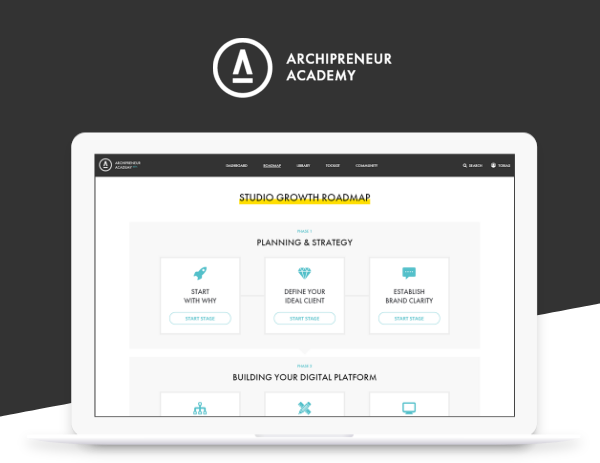
JOIN THE
ARCHIPRENEUR ACADEMY
- 9 Stage Studio Growth Roadmap
- Library of In-Depth Courses
- Checklists and Workbooks
- Quick Tips and Tutorials
- A Supportive Online Community

